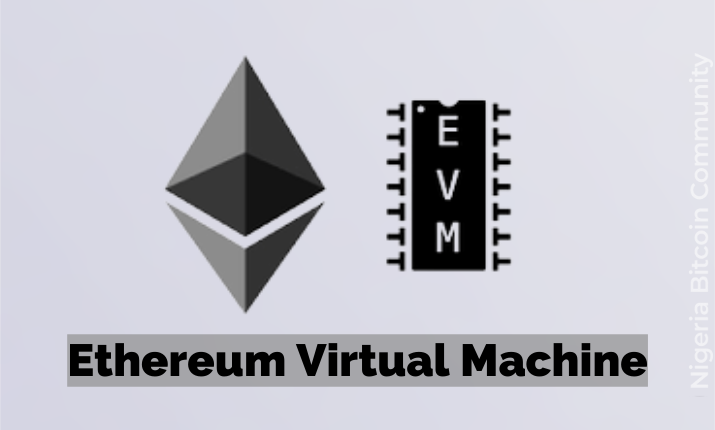What is the Ethereum Virtual Machine?
Ethereum Virtual Machine (EVM) is a distributed state machine that enables and executes smart contracts on Ethereum.
Why is the Ethereum Virtual Machine (EVM) important?
When a smart contract platform is EVM-compatible, it means it is interoperable with Ethereum. Developers usually look out for this feature because they want to be able to move their projects from Ethereum to the new platform.
Also, investors prefer to invest in projects that have EVM because it points to their scalability.
Keep reading for a more detailed explanation.
Ethereum Virtual Machine (EVM) Explained
The Ethereum Virtual Machine is the core of the Ethereum blockchain just like the heart is to the human body.
It is a distributed state machine that allows users to draft the code for the processing of transactions.
With the Ethereum Virtual Machine, users can determine complex spending conditions and user interactions that are not feasible in a simple payment network.
The EVM executes all Ethereum smart contracts. And Ethereum nodes maintain the EVM.
Therefore, each Ethereum node maintains its own copy of the EVM.
Also, the correct state of the EVM is determined by consensus among nodes.
This setup achieves two purposes:
- Maintain the decentralized nature of the blockchain and;
- Create room for on-chain activities beyond simple peer-to-peer transactions.
Interestingly, the Ethereum protocol exists solely to keep the EVM continuous, uninterrupted, and immutable. All Ethereum accounts and smart contracts live on the EVM.
EVM is not the only mechanism that can create a programmable blockchain but it has dominated the world of smart contracts since its launch.
Also, the smart contract language, Solidity provides a readable and auditable language for developers to write EVM contracts.
You can learn more about writing a smart contract here – How To Deploy Ethereum Smart Contract – A Step By Step Guide
EVM compatibility – What does it mean?
Although Ethereum was the first blockchain to introduce the EVM, many other blockchains utilize it to provide smart contract support.
EVM compatibility simply means that a blockchain’s VM contains the same opcodes as the EVM.
An opcode is the first byte of an instruction in machine language which tells the hardware what operation needs to be performed with this instruction.
In other words, Ethereum applications can be deployed on that chain, without much or any modification to the flow or code.
It then means that a smart contract platform that is supported on an EVM-compatible blockchain can carry out exchanges on the Ethereum network.
Also, users can develop DApps on these platforms, in a similar manner to those that run on Ethereum. Interesting, huh?
Note however that a blockchain must not be EVM-compatible in order to be Solidity-compatible.
A VM must support the complete EVM instruction set without modification to be EVM compatible.
But if it doesn’t support the complete instruction set, it can be modified using the Solidity programming language.
Popular alternatives to the EVM are LLVM (used by Solana) and IELE (used by Cardano).
Why is Ethereum Virtual Machine (EVM) important?
Firstly, the EVM is popular and has a diverse set of opcodes.
As a result, many smart contracts and DApps are written for and deployed on EVM-compatible chains.
Secondly, the process of building on the EVM has been largely documented and refined by diverse individuals.
This lowers the entry hurdles for application developers to implement smart contracts on new chains.
Also, a long history of successful (and unsuccessful) EVM applications provides a secure and comprehensive developer environment.
Additionally, EVM smart contracts are easy to audit because of their massive adoption and history.
Furthermore, old users have a strong incentive to adopt new EVM-compatible blockchains because they get to be the first DApps to test them out after they are released.
Moreover, creating cross-chain bridges that make it easy to transfer money from one network to another requires EVM compatibility.
What could possibly be wrong with the EVM?
The major problem of EVM is gas pricing. Also, the Solidity programming language is pretty complex.
Gratefully, the tools that supplement EVM-based developers have improved the developer environment and experience, without losing the EVM’s functionality.
Some popular EVM-compatible chains are
Conclusion
Being the first template for implementing smart contracts, the EVM has thrived in development activities and tooling.
However, it can be upgraded to further refine incentives and improve the existing state of smart contracts.
This is where I’ll draw the drapes in this post, I hope it was worth your time.
Please drop any questions or thoughts you may have in the comments section below.
Also, share this post with your friends. Thank you!



0 Comments